
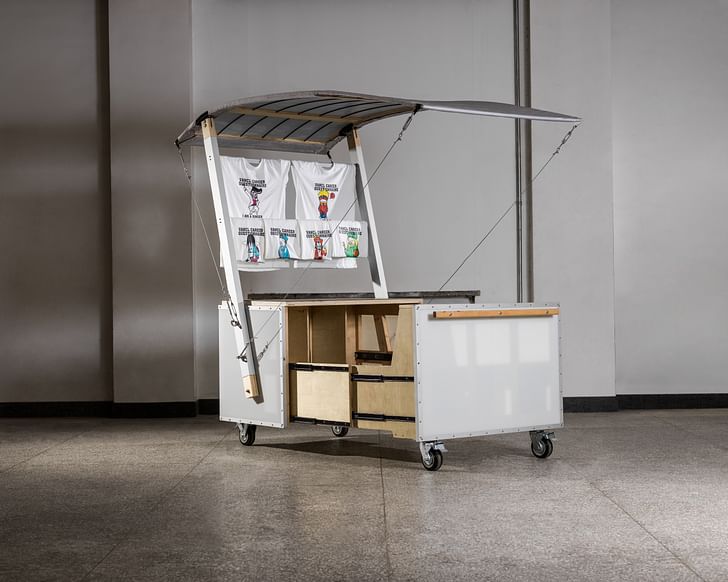
The “pop-up” shop has long been a steadfast option for small-scale enterprises to sell their wares, creating a flexible and relatively cheap venue for businesses. The challenge is to build space that is not only efficient, but mobile and expressive of that business’ personality. Students at Tsinghua University in Beijing were tasked with just that, designing and building three distinct pop-up storefronts on a tight budget, over the 8-week “Tectonic Studio”.
In teams of six, students created three different pop-up shops for under 2500 RMB (569 USD or 412 EUR), designed to store and sell t-shirts. Ideally, each structure could be moved by just two people. Considered next to Ai Weiwei’s pojangmachas for the Gwangju Biennale, these pop-ups are reminders of mobile vending’s constant adaptation to new economic markets -- the idea isn’t new, but the designs can always be refreshed.
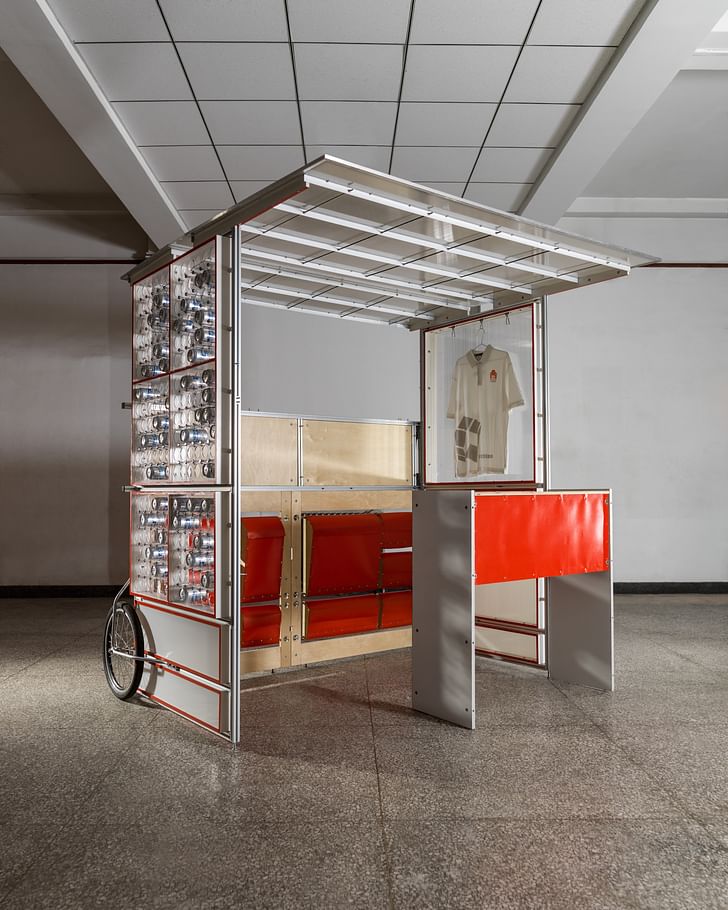
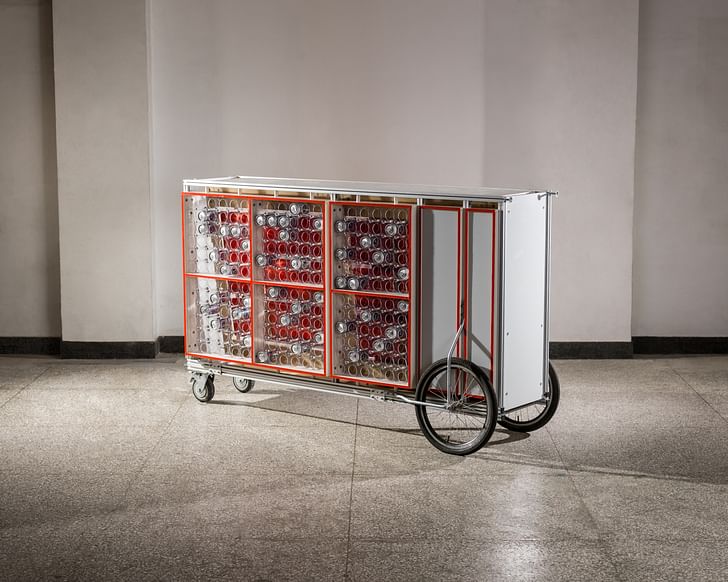
The students' three final designs are materialistically similar (the studio was sponsored by the construction services distributor, Hafele Corporation), but each group prioritized a particular facet of the classic storefront. The red pop-up stacks t-shirts in soda cans, creating an efficient and distinctive storage system; the blue pop-up emphasizes its inventory, with semi-transparent storage shelves; the white pop-up opens the product display to allow for visibility from all directions. Given the tight material, financial, spatial and programmatic requirements of the studio, each group's project represents a unique response to the diverse landscape of mobile economies.
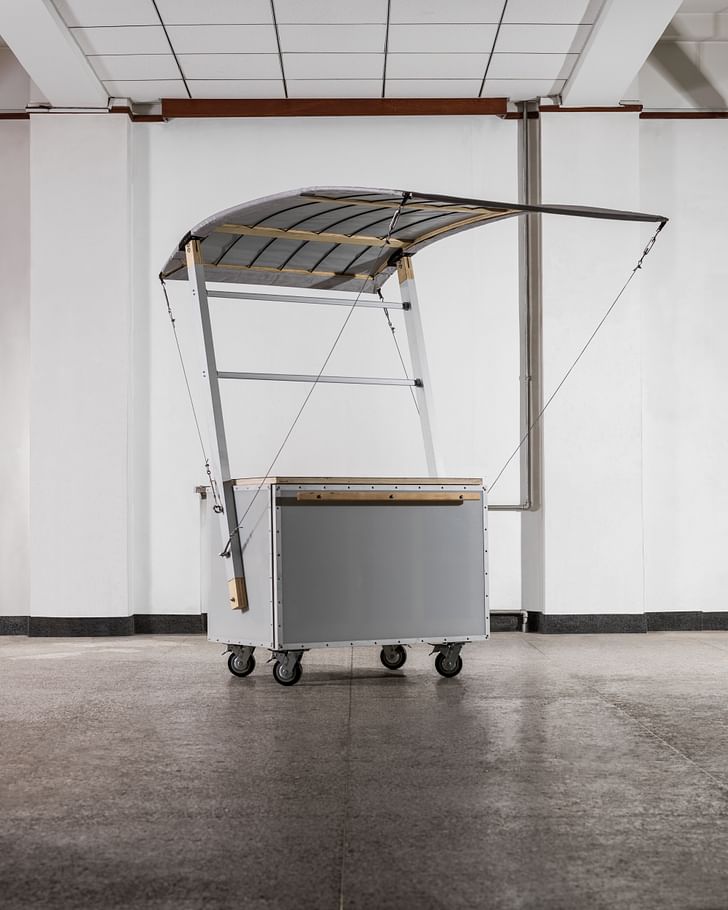
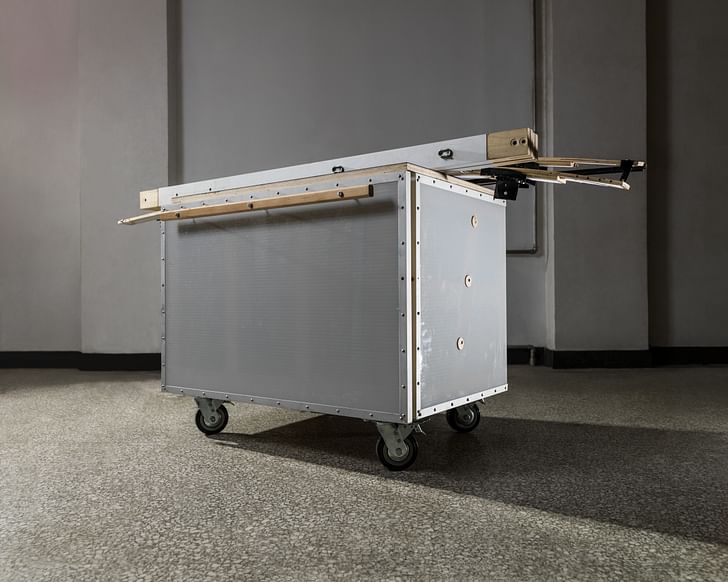
The organizers of Tectonic Studio had these thoughts on pop-ups, emphasizing their versatile and opportunistic nature. There's no need to mention what's being sold in these pop-ups, becauset the form itself is relevant to a vast variety of businesses:
The life of the street is ever changing, ever-evolving, always adapting. New opportunities present themselves continuously throughout the day, from season to season, from location to location: tourists, holiday celebrations, convenience shops, magazines, books, knick-knacks, handicrafts, snacks. A small business person needs to see an opportunity, be able to move fast, find a location, set-up shop and start doing business before the opportunity disappears. This is the purpose of a “pop-up” shop.
Pop-up shops are opportunistic, like mushrooms: when the conditions are just right, suddenly they appear. They are mobile, the are easy to transport and assemble on site. They can be packed up in a few minutes. They are distinctive, calling attention to themselves, attracting customers. They are practical and well adapted for selling a particular type of product. They are well designed and a good investment.

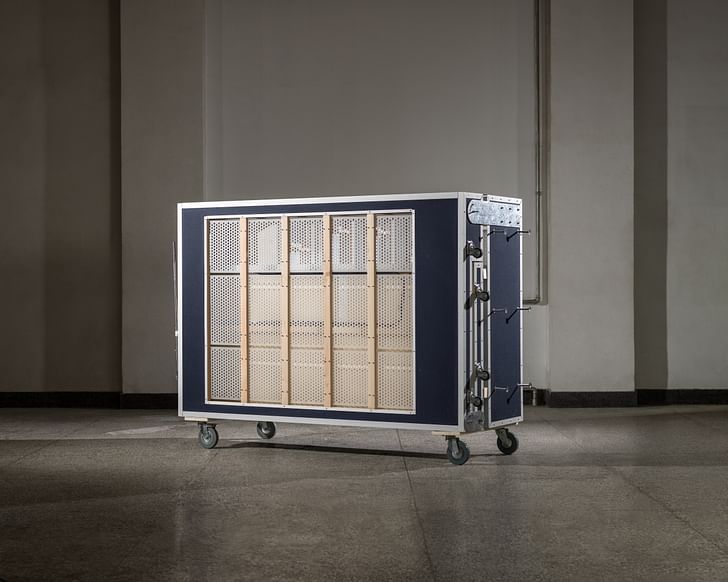
Here's the individual project descriptions, courtesy of each student group:
Group 1:
Yang Tianyu, Liu Changyue, Wang Zijian, Zhou Hui, LV Shiyang, Wang Minquan
The design emerges from the concept of a "self-contained pop-up shop". The shop consists
of three panels organized with customized hinge joint. During transportation, the shop is self-contained as a "box" with strong mobility, while in use the three panels unfold and stand up as a space defining interface. Panel 1 functions as display system, Panel 2 keeps the removable roof panels when mobile, Panel 3 provides a desk for dealing.
To gain extra flexibility and mobility, we replaced the solid boards with composite panels. The panels are made from pinewood frame structure, insulation infill, plywood surface, canvas covering, and aluminum edging, showing an elegance in craftsmanship.
Group 2:
Wu Chaoyun, Cai Zeyu, Wang Xiyao, Sun Guangbiao, Chen Yu, Cheng Kun
The function of our pop-up shop is to sell T-shirts that are packed in Coke cans. The basic idea for this shop is to develop a 'panel system', so that the shop may have better adaptability and mobility. To achieve that, our panels were designed to fit into four possible forms- 3 forms for selling in spaces of different sizes and 1 form for moving the shop. The shop could carry more than 200 T-shirt in cans and could be moved and assembled by one single person.
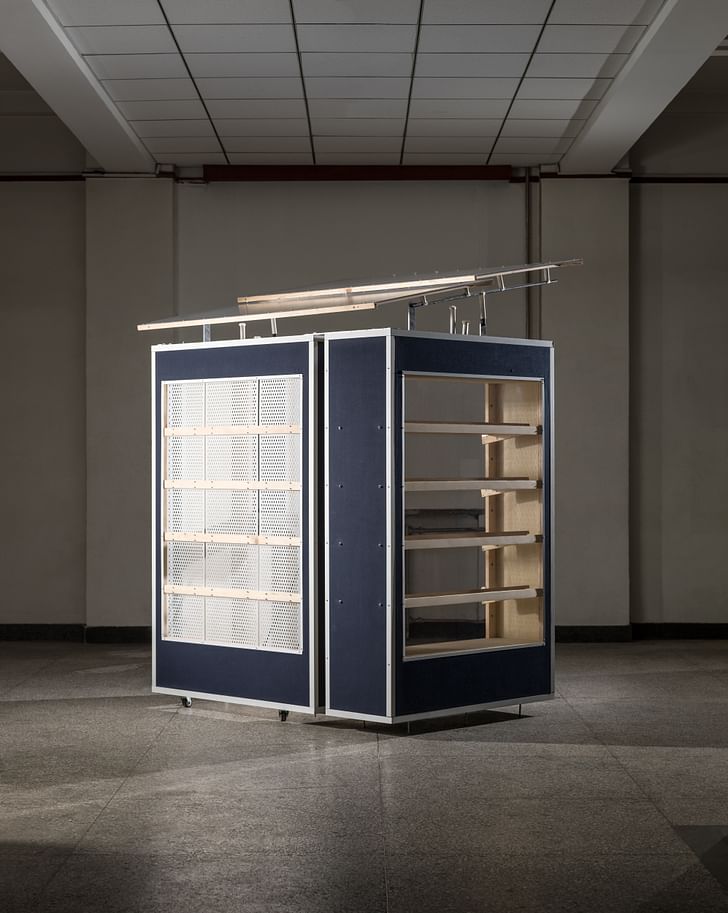
Group 3:
He Shen, Wang Zhi, Qiu Peiran, Wei Zhiyu, Chang Yushi, Shi Xin
Pop-up shops could turn up under any appropriate conditions in a minute. When it comes to our trial, we put forward a concept that all transforming processes can be achieved in quite an interesting way——PULLING and PUSHING.
Facing three vital problems, our design is generated step by step. The first thing is the roof system. We take advantage of waterproof canvas along with birch plywood and fiberglass rods and use two columns with cables on both sides, creating a sense of dynamic. Another key problem is how to pull it properly. Luckily, the drawer track from our sponsor Hafele really plays an important role. Then we reach decisions on where should be the counter top or the storage, where to display T-shirts, and where should the shop owner stand. The last challenge is how to make the shop portable. Considering this, we use frame system in order to make the structure a relatively light one. In the process of design, we also paid much attention to the aesthetic value of the shop. When we put different materials together, we tried to work under same principles.
Some general information about Tsinghua University's Tectonic Studio, courtesy of its instructor and organizer, associate professor Terrence Curry:
This 3rd year studio course explores how the integration of tectonics and the properties and characteristics of materials throughout the design process. This course emphasizes hands-on exploration, experimentation and discovery by direct interaction with materials, assembly systems and fabrication. Students are encouraged to build on the design methods and skills they have already gained in previous design studios, challenging them to test design concepts with built forms. The course includes, lectures, discussion, a short, 1 week, “warm-up” exercise, a design/build project and final presentation. The design/ build project has corporate sponsorship and will be organized as a competition.
Curry runs the studio every semester. For more information about the pop-ups or the studio in general, he can be contacted through email at: tcurry@tsinghua.edu.cn.



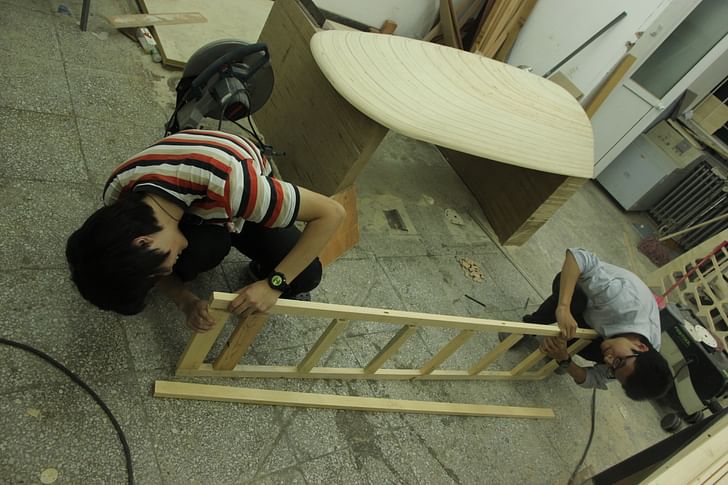

Former Managing Editor and Podcast Co-Producer for Archinect. I write, go to the movies, walk around and listen to the radio. My interests revolve around cognitive urban theory, psycholinguistics and food.Currently freelancing. Be in touch through longhyphen@gmail.com
2 Comments
Dear Ms. Taylor-Hochberg:
These are beautifully designed and provide an efficient solution to rolling storage! Do you know if they or something similar are available for sale and, if so, are you able to direct me?
thanks kindly, LMR
I should start by saying i like the idea/execution.
but a couple of points/questions:
I wonder if the approach/studio was driven more by the sponsor Hafele Corporation or if the students also took on real vendors/shopkeepers as clients. If only in terms of research, ethnographic study or even measurements/specs.
Also re: this quote
"There's no need to mention what's being sold in these pop-ups, because the form itself is relevant to a vast variety of businesses"
obviously, price-point/mobility are two key drivers of form, for this sort of commercial setup. yet with that said, a quick scan of Google reveals a fair degree of variability in form, based on i would presume a couple of variables including whether for selling food or not, geography, culture etc
For instance...
Block this user
Are you sure you want to block this user and hide all related comments throughout the site?
Archinect
This is your first comment on Archinect. Your comment will be visible once approved.